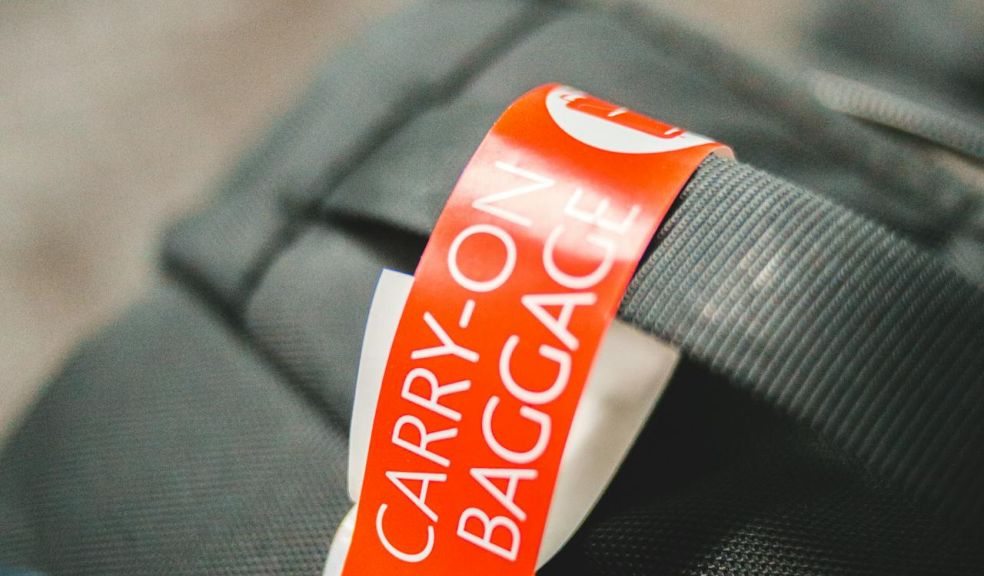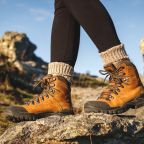
Why Every Family Travel Bag Needs a Mini Health Corner
Family travel is joyful until something small turns into a big interruption - a fever on the flight, a scratch that needs cleaning, or dry cabin air that makes a cough flare up at bedtime.
A compact, well-planned Mini Health Corner in your carry-on turns those stressful moments into solvable problems.
Instead of searching for a late-night pharmacy in an unfamiliar place, you’ll have what you need to assess the situation, provide basic care, and get the trip back on track.
This guide explains, in detail, how to assemble and maintain a practical family health kit that fits in a small pouch, with special attention to respiratory comfort for travelers of all ages.
Why a “Mini Health Corner” Matters
Travel amplifies little problems. Kids and older adults react more to dry cabin air, sudden temperature shifts, pollen, and crowded spaces.
A Mini Health Corner - thermometer, children/adult fever reducer, antihistamine, saline spray, bandages, and any needed respiratory support - lets you check, treat, and carry on within minutes.
Keeping it in your carry-on avoids midnight pharmacy hunts, language barriers, and closed shops.
Early, on-the-spot care prevents symptoms from snowballing into missed flights or sleepless nights, turning potential crises into quick fixes and keeping the trip enjoyable.
The Core Principles
- Pack small, act fast: Prioritize items that solve common, likely issues within minutes.
- Carry-on, always: Health essentials stay with you, not in checked bags.
- Label & separate: Clear pouches prevent rummaging during stressful moments.
- Keep it dry & clean: Moisture invites problems - air-dry anything washable before packing.
- Refresh after each trip: Replace used meds, wipes, and batteries.
Your Mini Health Corner: Core Checklist
Med & Monitoring
✓ Digital thermometer
✓ Age-appropriate fever/pain relievers (children’s & adult)
✓ Antihistamine (allergy relief)
✓ Oral rehydration salts (packets)
✓ Saline nasal spray/drops
✓ Small pulse oximeter (optional for families who track oxygen saturation)
Care & First Aid
✓ Assorted bandages, gauze, hypoallergenic tape
✓ Antiseptic wipes / alcohol wipes
✓ Tweezers & small scissors (scissors go in checked bag if they exceed airline limits)
✓ Hydrocolloid blister patches (great for walking days)
Hygiene & Prevention
✓ Hand sanitizer (travel size) & disinfectant wipes
✓ Tissues; a few quality masks if anyone prefers or is recovering from illness
✓ Lip balm & gentle moisturizer (cabin air is dry)
Respiratory Comfort (compact)
✓ Saline ampoules / vials (if you use them)
✓ Spacer chamber (if someone uses an inhaler)
✓ Portable nebulizer
Power & Paperwork
✓ Power bank + short cables for small devices
✓ Printed med list + digital copies (phone + cloud note)
✓ Any doctor/device letters you typically carry
Quick Reference Table: What & Why
|
Item |
Why it matters |
Where to pack |
|
Digital thermometer |
Fast, objective decisions (treat now vs. rest/watch) |
Carry-on |
|
Pain/fever reliever |
Comfort & temp control for kids/adults |
Carry-on (labeled) |
|
Antihistamine |
Allergies, hives, or unknown exposures |
Carry-on |
|
Saline nasal spray |
Dry cabin/hotel air; gentle congestion help |
Carry-on |
|
ORS packets |
Dehydration from heat, tummy bugs, or flights |
Carry-on |
|
Bandages & antiseptic |
Cuts, scrapes, blisters - no pharmacy hunt |
Carry-on |
|
Hand sanitizer & wipes |
Surfaces, sticky hands, quick clean-ups |
Outer pocket |
|
Masks (few) |
For recovery days or crowded indoors |
Flat pouch |
|
Power bank & cables |
Keep essentials usable on the go |
Tech pouch |
|
Portable nebulizer |
Rapid respiratory support when needed |
Padded pouch in carry-on |
Age-Specific Add-Ons
|
Family Member |
Add-Ons |
Notes |
|
Infants & Toddlers |
Digital thermometer with soft tip; saline drops; bulb or nasal aspirator; diaper-rash cream; fever reliever dosed by weight |
Pre-measure doses on a small card (by weight) |
|
School-Age Kids |
Chewable meds; motion-sickness tabs (if approved); small comfort toy; mini bandage kit |
Involve them - reduce anxiety |
|
Teens |
Acne spot patches; period supplies; personal inhaler/spacer if prescribed; electrolyte packets |
Encourage self-carry pouch |
|
Adults & Seniors |
Regular prescriptions; spare glasses; low-dose pain reliever; heartburn relief |
Keep a 1–2-day med reserve in a separate pouch |
A Practical Medication Game Plan
Before you travel, make a simple medication inventory listing drug names, strengths, dosing times, and the purpose for each item. Keep one copy in your phone and another printed in your passport wallet.
Time zones are where plans unravel, so choose a strategy in advance: either keep home-time dosing on travel day and switch to local time the next morning, or shift gradually over one to two days for medicines with stricter timing.
Set alarms for the first 48 hours while your routine resets. If a prescription is critical, carry a backup day’s supply in a second, clearly labeled pouch separate from the main kit; redundancy is inexpensive insurance.
Wherever possible, keep original packaging for prescriptions - it speeds airport discussions and helps a local pharmacist if you need assistance.
Respiratory Readiness Without Overpacking
Many families don’t need respiratory devices - but for those who do, a compact setup provides real peace of mind without turning your bag into a clinic.
If someone uses an inhaler, pack it along with a spacer and keep both reachable, not buried.
Saline ampoules can soothe dry airways after flights or in arid climates. A portable nebulizer is a smart addition for those who occasionally need mist-based delivery and don’t want to rely on hotel power outlets or bulky equipment; modern handheld units are quiet, lightweight, and easy to clean on the road.
If you’re comparing options, this overview of a nebulizer for travel is a helpful place to start when evaluating size, power, and maintenance needs.
Whatever you bring, pair it with a tiny cleaning routine: rinse detachable parts as directed, shake off excess water, and air-dry fully before sealing in a pouch. Keep a short charging cable or spare batteries with the device so it’s always ready.
How to Pack the Mini Health Corner (Step-by-Step)
- Two clear pouches: one “Fast Access” (thermometer, fever meds, wipes, bandages) and one “Devices & Docs” (portable nebulizer, spacer, power bank, med list).
- Label edges: Use washi tape or colored tabs so anyone can grab the right pouch quickly.
- Use a flat zip bag for paperwork (med list, doctor letter) behind your passport wallet.
- Daily top-off ritual: Each evening, replace used wipes, tissues, or bandages and let any washed parts fully air-dry before repacking.
Cleaning, Storage, and Daily Upkeep on the Road
Hygiene and dryness keep a kit dependable. Begin each use with clean hands; if you can’t access a sink, sanitize and let hands dry before touching devices or medicines.
After any rinseable components are used, air-dry them completely on a clean towel - sealing damp parts in a pouch invites odors and can shorten device life.
Protect liquids and electronics from heat by storing the pouch away from direct sun and never in a hot parked car.
Each evening, do a 60-second reset: check that the thermometer is in place, top up tissues and wipes, confirm batteries or charge levels, and repack anything that needs drying. This tiny routine keeps the kit ready for the next morning’s departure without a scramble.
Special Travel Scenarios: Flights, Road Trips, and Changing Climates
Flights concentrate many challenges into a few hours: dry air, limited access to water, and tight seating.
Keep the kit in your under-seat bag so you can reach it without opening the overhead bin. Drink small amounts of water regularly to counteract dryness, and use saline spray on landing if anyone feels congested.
If you’re carrying respiratory devices or medically necessary liquids, keep them separate and easy to declare at security to move smoothly through screening.
On road trips, create layers: a door-pocket mini kit (tissues, sanitizer, wipes) for constant use, a glove-box stash with bandages and a small pain reliever, and the main pouch stored out of the sun. Destination matters, too.
Beach environments require diligent sun care and hydration; mountain or cold destinations mean drier air and potential airway irritation - saline and scarves that warm inhaled air can help. If you’re traveling during high-pollen seasons, start your allergy plan before symptoms peak and consider sunglasses as a simple eye barrier.
FAQs
Can my child’s portable nebulizer go in carry-on, and will it be allowed on the plane?
Yes, families commonly carry compact medical devices in hand luggage. Keep it clean, dry, and in a separate pouch. Bring a brief note or prescription label if you have one, and keep any liquid medications/saline easy to present at security. Policies can vary by airline and airport - check ahead if you’re unsure.
How do I manage medicine times across time zones for kids?
Two simple strategies work well:
- Same-day switch: Keep home-time dosing for the travel day, then start local-time dosing the next morning.
-
Gradual shift: Move dose times by a few hours over 1–2 days for strict schedules.
Set phone alarms, track doses in a note, and ask your clinician in advance if a specific drug has timing constraints.
What’s the difference between a first-aid kit and a travel health kit?
A first-aid kit treats minor injuries (cuts, blisters, scrapes). A travel health kit adds comfort and illness-management tools: thermometer, fever/allergy meds, saline spray, hydration salts, and - for families who need it - compact respiratory gear (inhaler/spacer, portable nebulizer). Most families benefit from both together.
Conclusion
A thoughtfully built Mini Health Corner won’t weigh you down, but it will change how confidently you travel.
With a thermometer to guide decisions, a few well-chosen medicines, tidy first-aid basics, and a straightforward plan for hydration and respiratory comfort, you’ll turn common travel hiccups into minor detours.
Pack it in clear pouches, keep it dry, refresh it nightly, and you’ll spend less time troubleshooting and more time enjoying the trip - exactly how family travel should be.
















